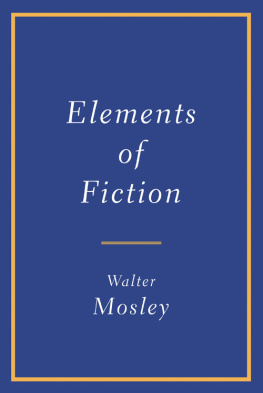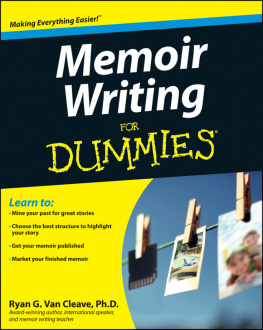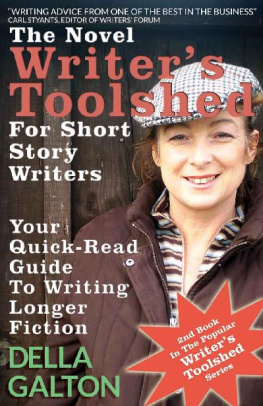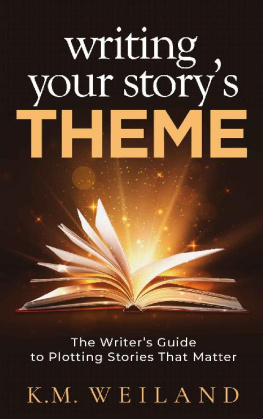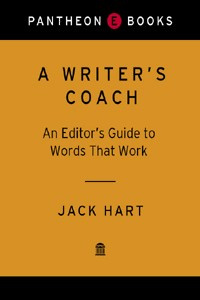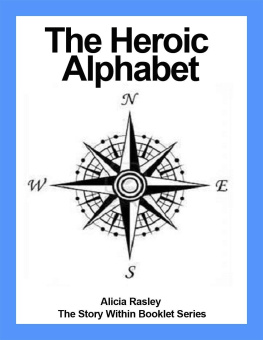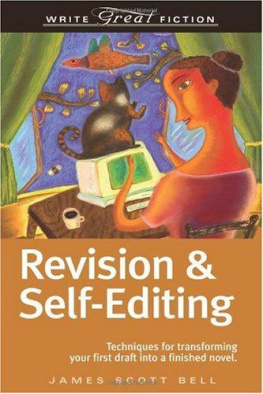S is for Story
A Writers Alphabet
In S is for Story: A Writers Alphabet, an A to Z journey through a writers life and process, author Esther Hershenhorn masterfully connects the reader and the writer. Writers tips and inspiring quotes from award-winning authors dot the entries, from A is for the Alphabet and D is for Drafts through K is for Four Kinds of Writing on to the end. All facets of being and becoming a writer at any level are introduced in rhyme and explained in simple expository text. Writing terms such as revision, voice, and word choice, story elements such as plot and character, and writing opportunities such as letters, journals, and notebooks are defi ned in easy-to-understand language.
J is for your Journal,
yours alone to write,
a record true
of what you do
morning, noon, or night.
A journal is a notebook for recording what happens in your life and your reactions to those events. You choose your writing time, theme, style, readers. Be sure to note each entrys date and setting. Revisiting your journal lets you re-explore your life.
Imaginative, colorful illustrations by artist Zachary Pullen vividly bring the poetry and prose to life. Readers of all ages will enjoy the depth and creativity expressed in these original compositions.
S is for Story
A Writers Alphabet

Written by Esther Hershenhorn and Illustrated by Zachary Pullen
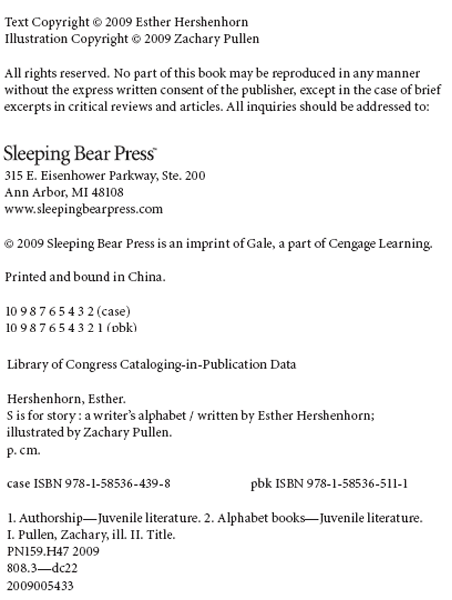
To the talented writers (and readers too, of course!)
of Chicagos Louisa May Alcott School.
With special thanks to Ms. Michelle Knight and
Miss Jenny Vincents 08 Fifth Graders.
ESTHER

For the letter H and the letter R,
two of my favorites.
ZAK
A
People have been telling tales forever. But how they came to write those tales for others to read is a whole different story.
At first, people drew pictures of their ideas and words on cave walls or carved tiny symbollike wedges into clay tablets they baked. The ancient Egyptians drew tiny pictures they named glyphs to represent their words. Eventually, the Phoenicians created a writing system of ordered letters, each letter representing a single sound or syllable. Combining the syllables allowed people to create a limitless number of words.
The Greeks adopted this system, added vowels and named it alphabetos, after the first two letters, alpha and beta. The Romans spent several centuries tweaking the system, creating the Latin alphabet Englishspeaking people use today.
Recognizing letters and the sounds they make is the first step to learning how to read and write. Alphabet books, songs, soup, and even jumprope jingles teach us all our ABCs.
Begin at the beginning and go on till you come to the end: then stop.
Lewis Carroll,Alices Adventures in Wonderland
A is for the Alphabet our letters six plus twenty, that build the words,that build the tales, we read and write aplenty.

B
Just as someone had to invent the alphabet, someone had to invent the book. Wood and paper replaced the Egyptians clay; the Romans bound, covered sheets of paper known as codices replaced tablets and scrolls. Johannes Gutenbergs invention of moveable type allowed books to be more easily printed and published. The word publish truly means to print and give to the public, or people.
No matter how we produce and store books today, traditionally, electronically, or via the latest technology, books offer anything and everything to anyone and everyonefrom maps, recipes, stories, and songs to paintings, poems, puzzles, and facts.
Heres a trick: read like a writer. Once youve read a story as a reader, return to the pages wearing your WRITERs cap. Notice how the author kept you turning the pages.
Heres another trick: read about other writers. A biography is a written account of a persons life. Read how contemporary or longago writers gathered their ideas and learned and honed their craft.
I dont know a single writer who wasnt a reader first.
Andrew Clements
B must be for Book, of course, coverwrapped bound pages, a treasure chest of gold and gems, prized bounty for all ages.

C
Most stories tell of a character, a particular someonehuman or not, real or imagined, who claims the page like a movie star claims the screen.
Its that character who pulls us in and keeps us reading. We travel along, living the story.
Think of Alice, Peter Pan, or Kate DiCamillos Despereaux. Think of your favorite character from your favorite book.
While many elements such as setting and plot shape a story, character plays an especially important role. Character sets the story in motion.
The writers job is to create round, not flat, characters. Knowing each story character from the inside out helps you do just that.
Imagine your characters Birthday Wishes, to learn their needs and wants, or their deepest, darkest secrets, to learn their fears and obstacles.
Interview your characters, asking important questions. Their answers will tell you their thoughts and actions.
Immerse yourself in your characters lives, especially before their stories begin.
What happens is a reciprocal gift between writer and reader: one heart in hiding reaching out to another.
Katherine Paterson
C is for the Character, every storys star, the one for whom we cheer, we care, with whom we travel far.

D
A first draft is a beginning. The writer writes, telling himself the story. Word choice, spelling, and punctuation matter little. Many writers underline words and sentences they know require attention, returning to them in a later draft.
The need for drafts proves most writing is rewriting. Once you know your story, subsequent drafts offer you opportunities to tell that story the best way possible to your readers.
Or, listeners, as in the case of Abraham Lincoln. Numerous myths surround the presidents writing of his 272word Gettysburg Address. Lincoln first wrote his words on White House stationery, thinking about his speechs theme. Over seventeen days he revised, sometimes on envelopes. Some say he even used the top of his stovepipe hat as a writing surface while riding the train to Gettysburg. Once there, he continued to revise up until his next days delivery.
Few of Lincolns many drafts remain, reminding writers: save your writing!
I start like most writers startwith a very bad first draft which becomes something to fix, and change, and hopefully make better.
Pam Muoz Ryan
So, D? Its for the Drafts we write, from rough to finally ready, our chance to tell our good tale well, rewriting, slow and steady


